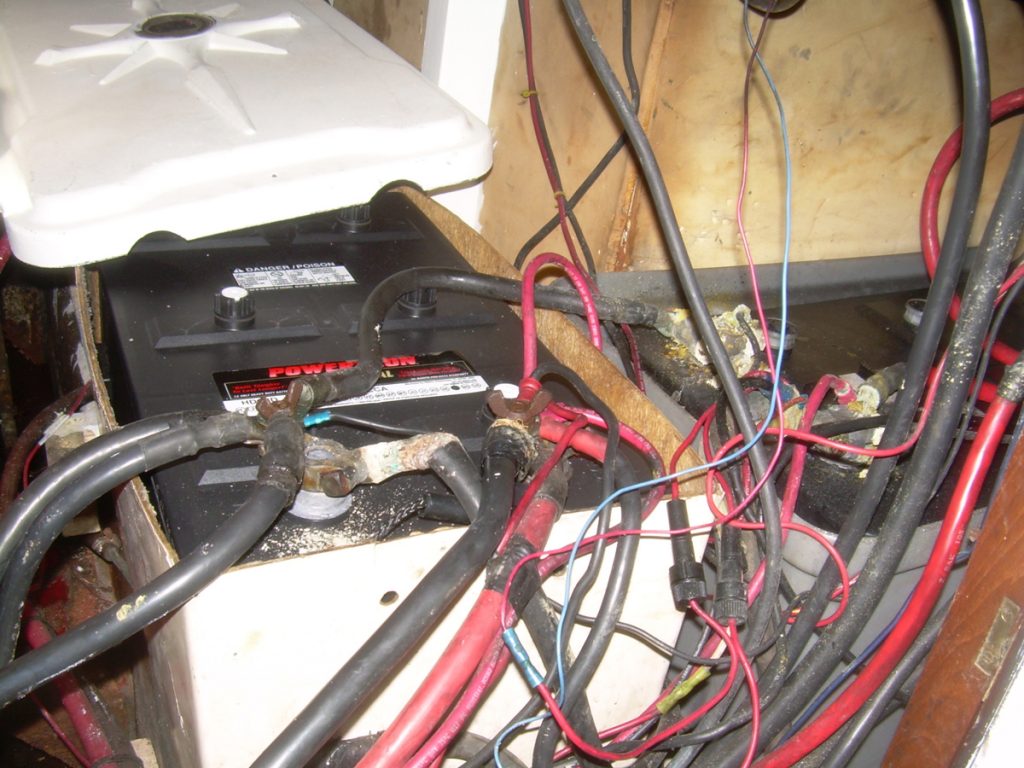December 03, 2015
By Fritz Grell
Boat fires are rare, potentially devastating and mostly preventable. Here's the scoop.

After witnessing a bad boat fire that completely destroyed two boats, I wondered what the three main causes of boat fires might be.
Boat U.S. insures a lot of boats, including mine, and was very helpful in providing just the kind of information I was looking for. According to their statistics, the overwhelming majority of boat fires, 55 percent, are caused by electrical wiring failures. If you think you're not at risk because your boat doesn't have shore power, think again, since most of the electrical fires are of 12 volt DC origin.
Chafing, vibrating wires wear through their insulation and can then start fires. You don't have to run all your wires in a conduit, but they must be well-secured by P clamps and wire ties so they are away from heat sources, hard corners or any item that could pierce or wear through the insulation. They should be secured to bulkheads, overheads or other solid structures every couple of inches to prevent movement that results in insulation chafe. Just be sure to route the wires so they're not in the way of a drill bit on some future installation!
 “Grand slam” of 12-volt fire hazards: Corroded, overloaded and unswitched battery connections; unsecured wire runs; no apparent circuit protection for cables. At top, worst-case scenario.
“Grand slam” of 12-volt fire hazards: Corroded, overloaded and unswitched battery connections; unsecured wire runs; no apparent circuit protection for cables. At top, worst-case scenario.
Use marine heat-shrink connectors and read the manufacturers' installation instructions to be sure you have heavy enough wire for the accessory and the correct size breaker or fuse. Longer wire runs require heavier wire. Wire into the 12-volt panel so the power to the accessory you add can be turned off by turning off the main battery switch. When in doubt, consult an experienced marine electrician.
Shore power causes fewer fires but the weak link there is the connection in the cockpit. The plug is in a wet location and both the inlet and power cable end need to be checked for corrosion. I've seen many cable ends that have burn marks due to poor connections and those cable ends should be replaced.
About half as many fires are caused by engines and transmissions overheating.
Most of these fires could have been avoided by proper maintenance of the cooling system. For inboards, start at the through hull to be sure there is good water flow, unobstructed by marine growth or debris. Clean the strainer then go to the water pump. Remove the plate over the water pump impeller and inspect the impeller. If there are blades missing, replace the impeller and remove the hose to the first cooler to retrieve the broken-off impeller blades. While you are in there, also remove any other debris at the end of the cooler/heat exchanger such as shells or old zincs. Periodically, the coolers do have to be removed and cleaned internally. If you have good water flow but the engine is still running above recommended temperature, the coolers probably need to go to the shop.
The third most common cause of boat fires is fuel related and is a distant third at only 8 percent. As you would expect, most of these fires are from gasoline. Take care when fueling that the nozzle is in the correct fill, the fill hoses are in good condition and hatches are closed to prevent fumes from accumulating below. All fuel lines, filters, connections and other components should be in top condition. Fortunately, gas has a strong odor and checking the engine room for any whiff of gas before starting the motor should prevent most problems. If an exhaust blower is installed, always run it for at least 4 minutes before starting the engine.
Boat U.S. urges boaters to fight fires only if they are small and confined to the immediate area, and only if you have an immediate exit available. Hold the unit upright and sweep side-to-side at the base of the fire. For electrical fires, first turn off the main battery switch, if it is safe to do so. FS
Which Extinguisher?
The U.S. Coast Guard requires that most vessels to 26 feet carry at least one type B-I fire extinguisher.
Vessels to 40 feet are required to carry two B-I, or one B-II, and there are further requirements for larger vessels.
What's a B-I or B-II? Good question.
Extinguishers rated Class B are designed to fight fires of flammable liquid origin—gasoline, alcohol, grease. Most portable extinguishers sold in marine stores are rated Class B or C (commonly abbreviated
B:C), which means they are also rated to fight electrical fires. Class A fires are ordinary combustible materials, such as wood or fiberglass. There are also A:B:C, or “tri-class” extinguishers, such as the Kidde Mariner 110 shown here.
The numeral in B-I or B-II reflects USCG minimum quantity standards for fire-fighting agents of different types: for instance 2 pounds dry chemical agent in B-I, whereas a B-II must have 10 pounds of same. Always look for the USCG B-I or B-II rating on the extinguisher, as the Underwriters Laboratory classification does not reflect quantity. The UL system does indicate relative fire-fighting performance: 10-B, for instance, is more effective than a 5-B... but both are considered type B-I.

